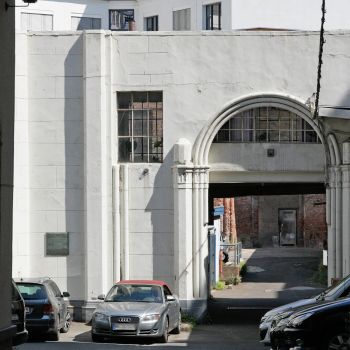loading
Architectural planning office
Johann H. Klees-Wülbern
Project Title
Neuer Tempel Poolstraße, Synagoge
Location not publicly available/visible
Hamburg , Deutschland
Status
Completed 1844 , Heritage-listed Building Synagoge; Wohnhaus: Mitte 19. Jh.
Main Category
Commercial Building
Sub Category
Manufacturing
Author
MoA/Jörg Stiehler
Online Publication
Description
Hamburg was one of the main centers of the reform movement that emerged in German Jewry around 1800. Its pioneers wanted to reform the life of the Jewish population comprehensively in order to overcome their isolation and discrimination. By discarding traditional Jewish "idiosyncrasies," Jews were to "prove" themselves as equal members of modern society, according to the view of the time. In Hamburg, this program had been represented since 1817 by the New Israelite Temple Association, one of the very first Jewish reform initiatives. The reform program encompassed all areas of life, including the Jewish rite. The Temple Prayer Book, published in 1818, provoked harsh criticism from Orthodoxy because of its abridgements and reformulations. However, the Reformed services with German sermon, mixed choir singing and organ music had great success, especially among the more acculturated members of the middle class. Therefore, starting in 1842, the temple was built in the backyard of 12 Pool Street - the world's first synagogue building of Reform Judaism. Architecturally, the building embodied the Reform claim and was clearly oriented towards the structure of a Protestant church. The building served as a synagogue for almost 90 years, until the new temple in Oberstraße was consecrated in 1931. Briefly still used as a storage room, the Jewish community had to sell the building in Poolstraße to a private individual in 1937. In the November pogrom the temple remained undamaged, but large parts were destroyed by an aerial bomb in 1944. After the war, the former interior of the synagogue served as a commercial yard, including a car repair shop. Today, the lower half of the entrance area and the eastern part with the apse are still preserved. After decades of decay, interest in the site has been stirring again in recent years. In 2020, the city of Hamburg purchased the site, and since then the preservation of the ruins has been discussed, as has its future use. Small plaques commemorate the history of the site, but it is currently only accessible during events.
read more
Project number MoA
26783


